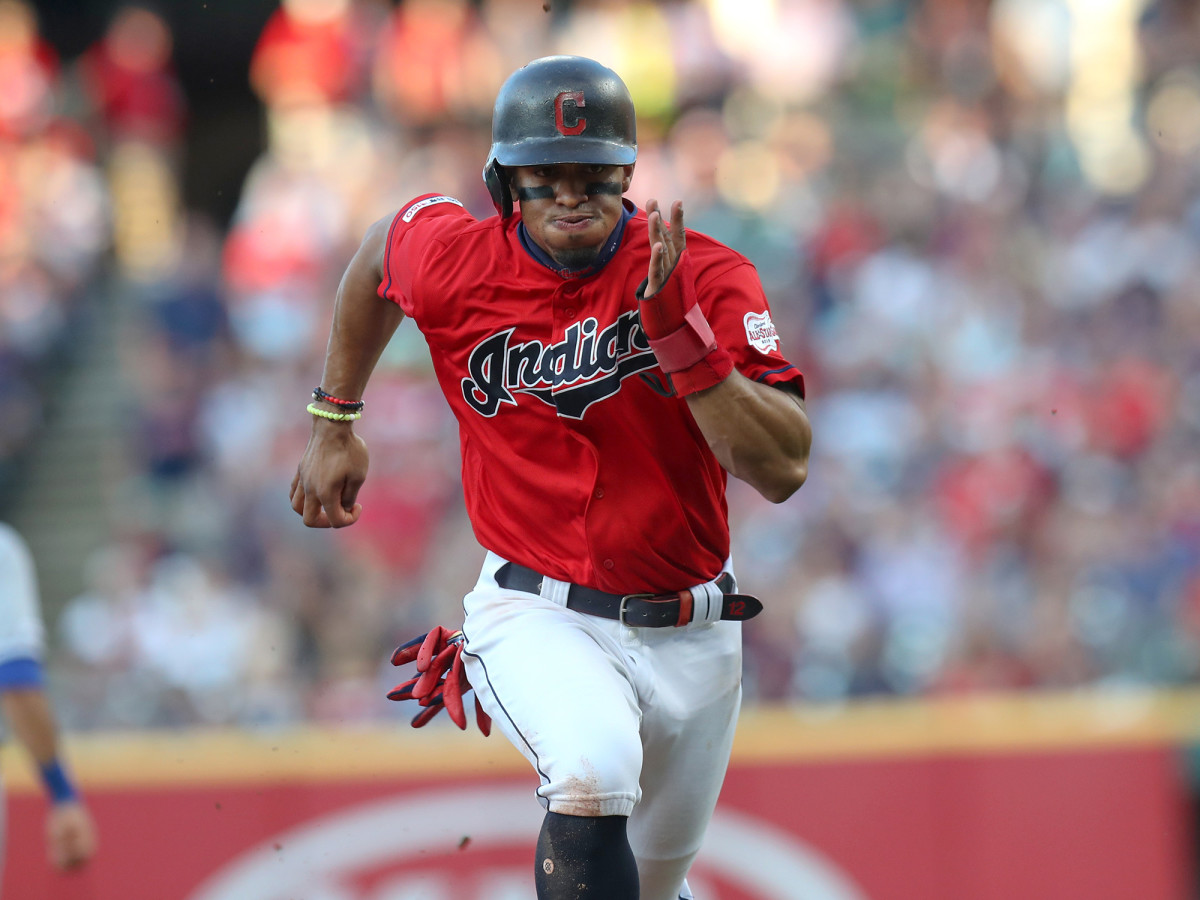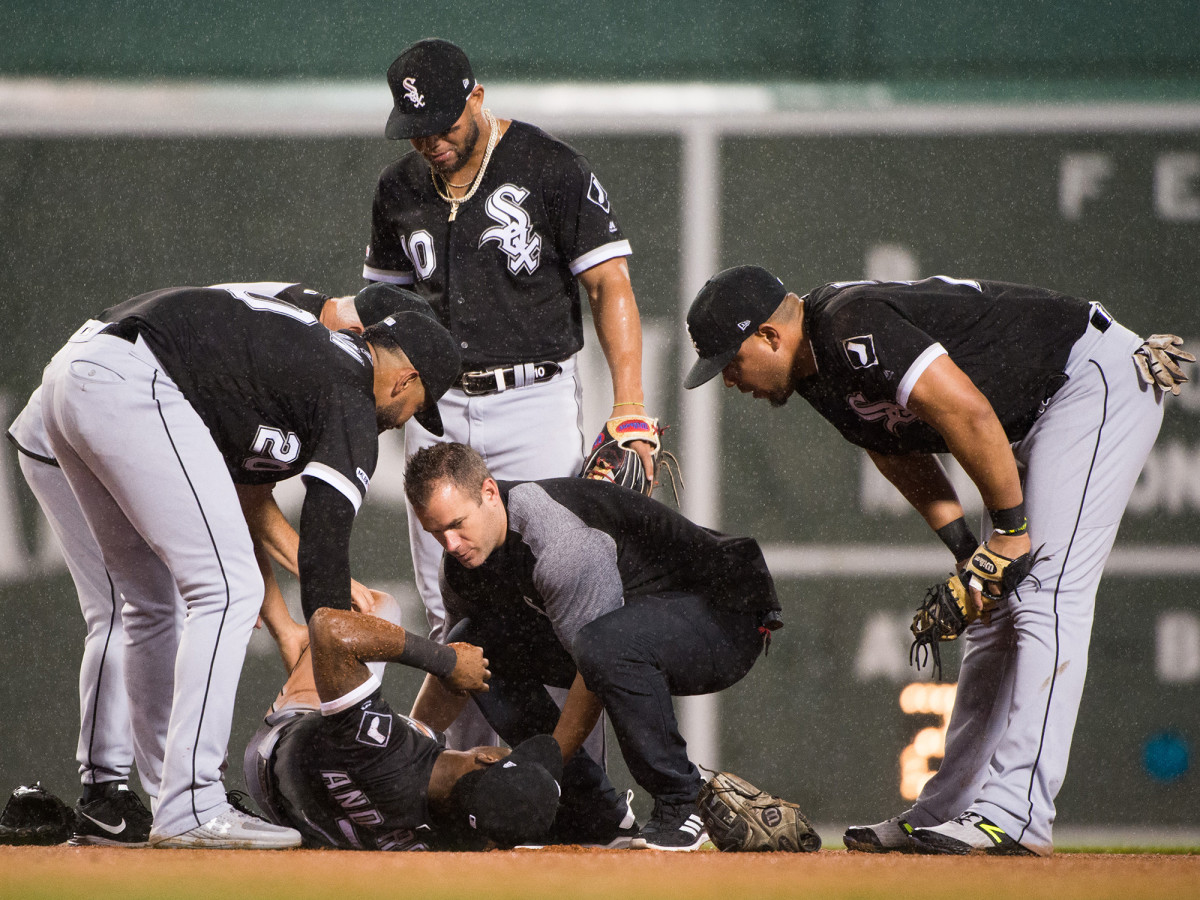MLB Trade Deadline Spectrum: How Every Team Should Approach the Next Five Weeks

There are five weeks to go until the trade deadline, but which teams are buying, selling, or holding? Last week, I laid out where every squad falls on the trade spectrum. This week, I’m revisiting my picks to see if anyone’s jumped from one group to another—or who’s close to moving up or falling out of their spots.
All stats and records are through games from Tuesday, June 25.
BUYERS
Atlanta Braves (47–33)
Boston Red Sox (44–37)
Chicago Cubs (43–36)
Cleveland Indians (43–36)
Houston Astros (50–30)
Los Angeles Dodgers (55–26)
Milwaukee Brewers (42–37)
Minnesota Twins (51–27)
New York Yankees (51–28)
Philadelphia Phillies (41–38)
Tampa Bay Rays (45–34)

Are you ready to believe in Cleveland? The Indians are the new addition to the buyers group thanks to a June surge—15–7 on the month—that’s seen them climb into the second wild-card spot. And the schedule is heavily in their favor: After their current set with the Royals wraps up on Wednesday, the Indians get three at Baltimore, three more with Kansas City and a pair against Cincinnati before the All-Star break.
In other words, don’t be surprised if Cleveland is in prime playoff position at and after the Midsummer Classic. Things will get mighty tough in August, though: the Astros, Angels, Rangers, Twins, Red Sox and Yankees all await in a row. If the Indians want to hold onto their gains, they need to make some moves before the deadline. The imminent return of Mike Clevinger from the injured list (again) from a sprained ankle should be a boost, as will the promotion of top prospect Bobby Bradley and the resurgence of Jose Ramirez (.326/.388/.558 over the last two weeks). But adding help in the outfield and second base still seems prudent, as well as pitching depth, be it rotation or bullpen, if possible.
Do I think the Indians will actually be buyers? Given the team’s reluctance to spend this winter, I’m skeptical. I also imagine that, if they were to make closer Brad Hand available, the potential return might swing Cleveland toward selling. But the window is there to make a charge after a dismal first two months, so I’ll be optimistic and assume the Indians want to go for it. If nothing else, given the horrible competition they face, they may end up having no other choice but to try.
As for the rest, I was tempted to drop the Phillies out of this group given their absolute freefall of late: 8–14 in June, losers of nine of their last 12, 5 ½ games out of first in the NL East, and recently swept in a dismal three-game series by the Marlins. But there are no useful free agents-to-be on Philadelphia’s roster, and it’s hard to imagine that a team that went all-in on the offseason is going to give up that quickly. Given that general manager Matt Klentak has said that no massive trade is forthcoming, though, this may be a situation where the Phillies spend the deadline in a holding pattern. Stay tuned.
SELLERS
Baltimore Orioles (22–57)
Chicago White Sox (36–41)
Detroit Tigers (26–48)
Kansas City Royals (28–52)
Miami Marlins (30–47)
Pittsburgh Pirates (36–41)
San Diego Padres (38–40)
San Francisco Giants (34–44)
Seattle Mariners (36–47)
Toronto Blue Jays (29–51)

San Diego is the only squad here with any real chance of climbing out of this group, but I don’t buy the Friars as a contender. Their Pythagorean record is a grisly 35–43; they have the fourth-fewest runs scored in the National League; and both their rotation and bullpen lack depth. Manny Machado finally getting hot after a slow start could help turn things around, but it may already be too late for a San Diego team that has more of a 2020 and beyond feel to it.
The newest member of the seller club, meanwhile, is Chicago. I wrote last week that the South Siders’ unexpected success (relative to what their rebuilding roster suggested) was a mirage, and that the roster had so many holes that buying would be practically impossible—and that was before Tim Anderson suffered an ankle sprain on Tuesday that will likely sideline him for several weeks. Since then, the Sox have dropped four of their last five games, pushing them five games under .500, six games out of the second wild card, and—I imagine—firmly into sell mode.
IN THE MIDDLE
Arizona Diamondbacks (40–41)
Cincinnati Reds (36–41)
Colorado Rockies (41–38)
Los Angeles Angels (40–40)
New York Mets (37–43)
Oakland Athletics (42–38)
St. Louis Cardinals (40–38)
Texas Rangers (43–36)
Washington Nationals (38–40)

Aside from Cleveland ascending to the buyer ranks and the White Sox being shifted to the sellers, this group stays the same. The Mets, though, will probably join Chicago by this time next week. Back-to-back series this week against the Phillies and Braves will go a long way toward determining their division fate—and it's off to a terrible start, as they’ve blown back-to-back games against Philadelphia—yet the math is already deeply against them. They’re already 10 back of Atlanta for first, and their chances of winning the East are hovering around 2%, according to FanGraphs’ projections. New York’s overall playoff odds, meanwhile, aren’t much rosier at 10.9%. Series losses to Philadelphia and Atlanta may put the final nails in the 2019 coffin.
Likewise, I’m losing hope for the Reds, who continue to be thoroughly inconsistent. A rousing three-game sweep of Houston and brief six-game win streak have given way to a three-game slide, costing Cincinnati a chance to make up precious ground in the Central, where its deficit is a manageable-yet-not-insignificant six games. The end of June and beginning of July offer the best shot yet at closing that gap, featuring seven games at home against the Cubs and Brewers. If they can’t capitalize on that, it’ll likely be time to sell in the Queen City.
